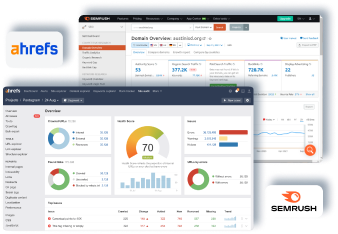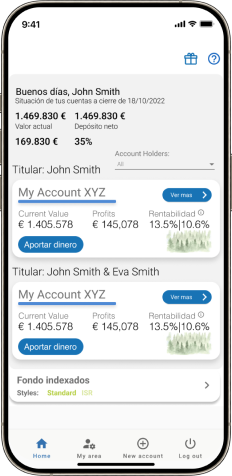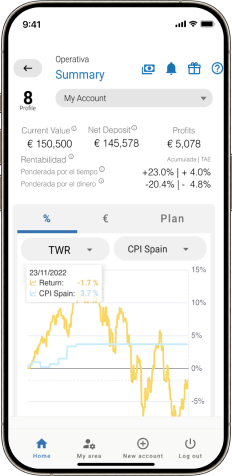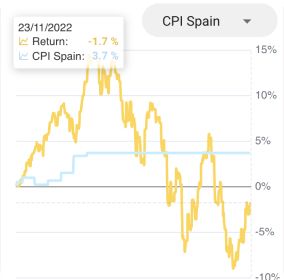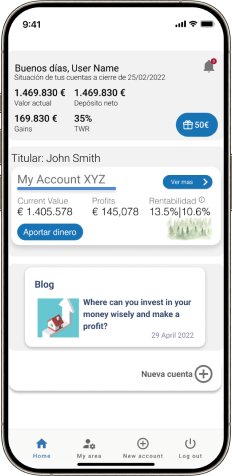Automating Business Processes with Avanga
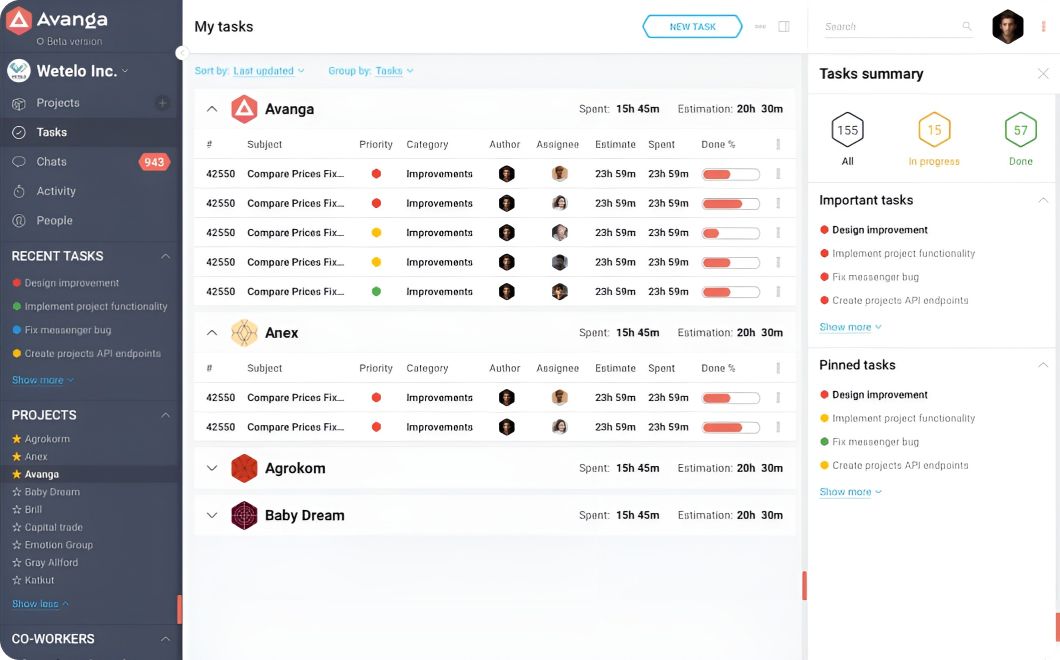
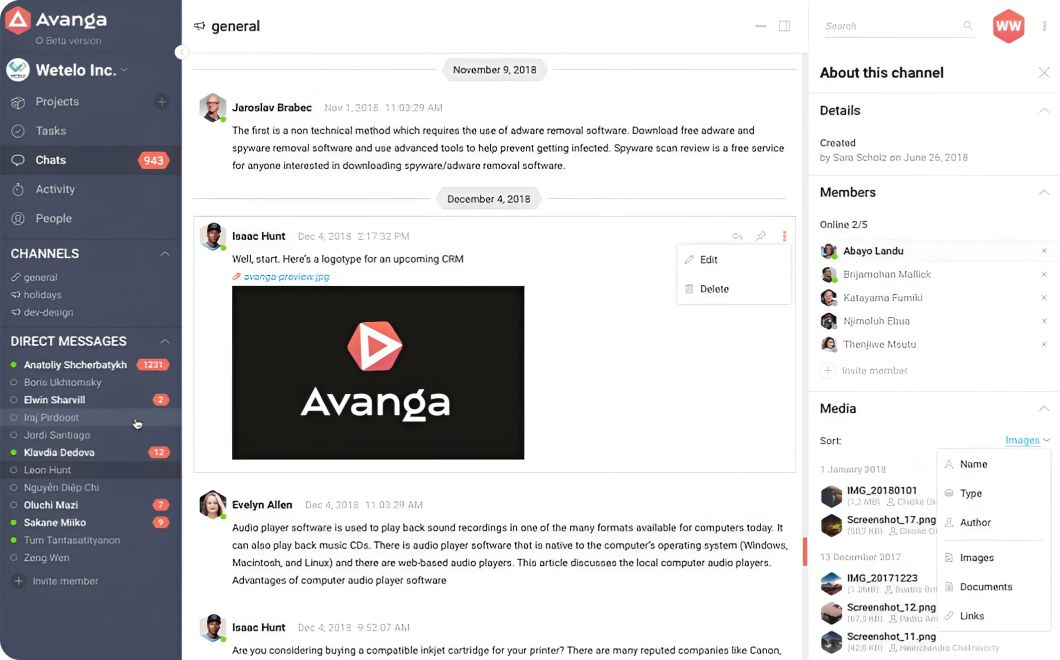
Project management application
CRM
Time tracking
01
Automating business processes in software development with Avanga, a project management application
When Wetelo started in 2010, we, like many other companies, used Trello, Slack, Jira, and similar tools for project management and communication. In the beginning, all these instruments worked well and allowed us to handle our tasks stress-free. But as our company started to grow, it became more and more difficult to track several projects at once.
The whole project management process started taking a lot of time and effort since we had to involve many additional instruments. We realized it is time for a change. That’s how the idea to launch our own internal product, Avanga, was born. With this tool, we were looking to automate our business processes and help our teams manage multiple projects more efficiently.
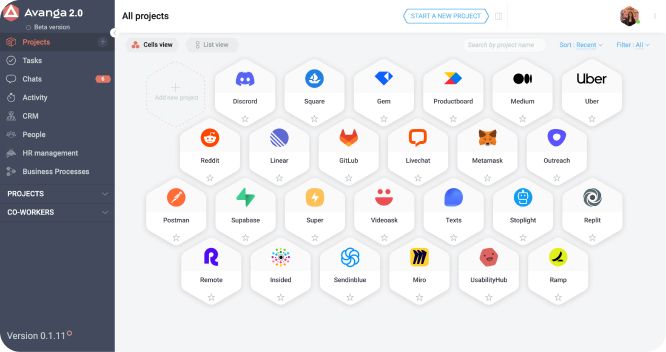
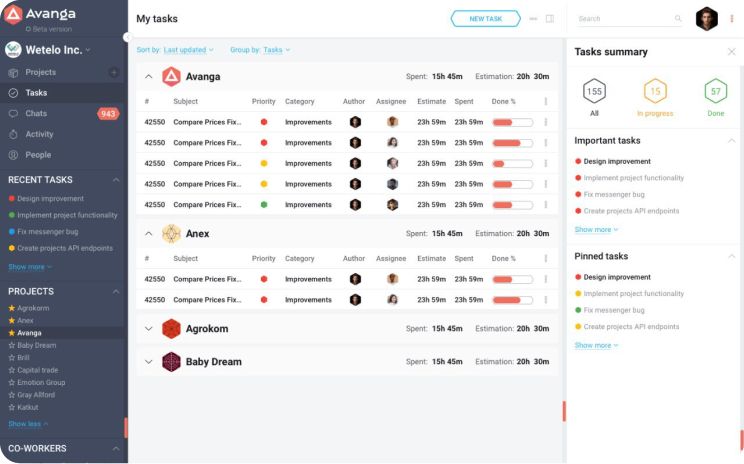
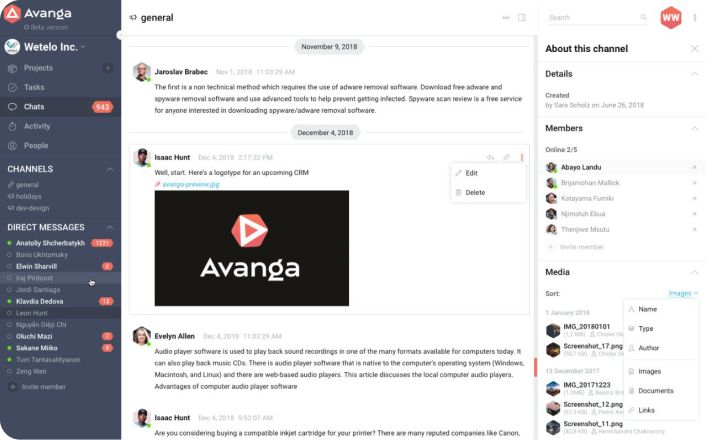
We needed to build a product that would allow us to improve our team's productivity and the quality of our collaboration with the clients.

02
The solution: product discovery to study employees’ needs and define the product’s core features
The first step in building our product was to understand what our employees needed. That's why we started with product discovery, the same process we use when helping our clients build their solutions. Then, we brainstormed to define the product's core features that could fully cover our company’s needs.
Our objective was to improve project management, increase the quality of communication between employees and clients, and boost our team’s overall productivity. We broke down the development process into several stages, starting with a minimum viable product, or MVP — a working solution that would allow us to test our assumptions and make changes to it as needed.

We needed a technology that would contain our working chats and projects and reflect business processes and activities related to the projects.

03
Technology choice and the modular building process
For the MVP development, our developers used the React library for the frontend, as it has a large library with adaptable and reusable UI components. For the backend, we chose Nest.js

04
Modular monolithic architecture
Our MVP had a modular monolithic architecture for future product scaling and involved the creation of the following isolated modules:
Projects
This module stores all our projects in one place and is responsible for informing users about their statuses. It is where you can control project tasks, measure progress, and form a daily schedule by sequencing an entire process chain.
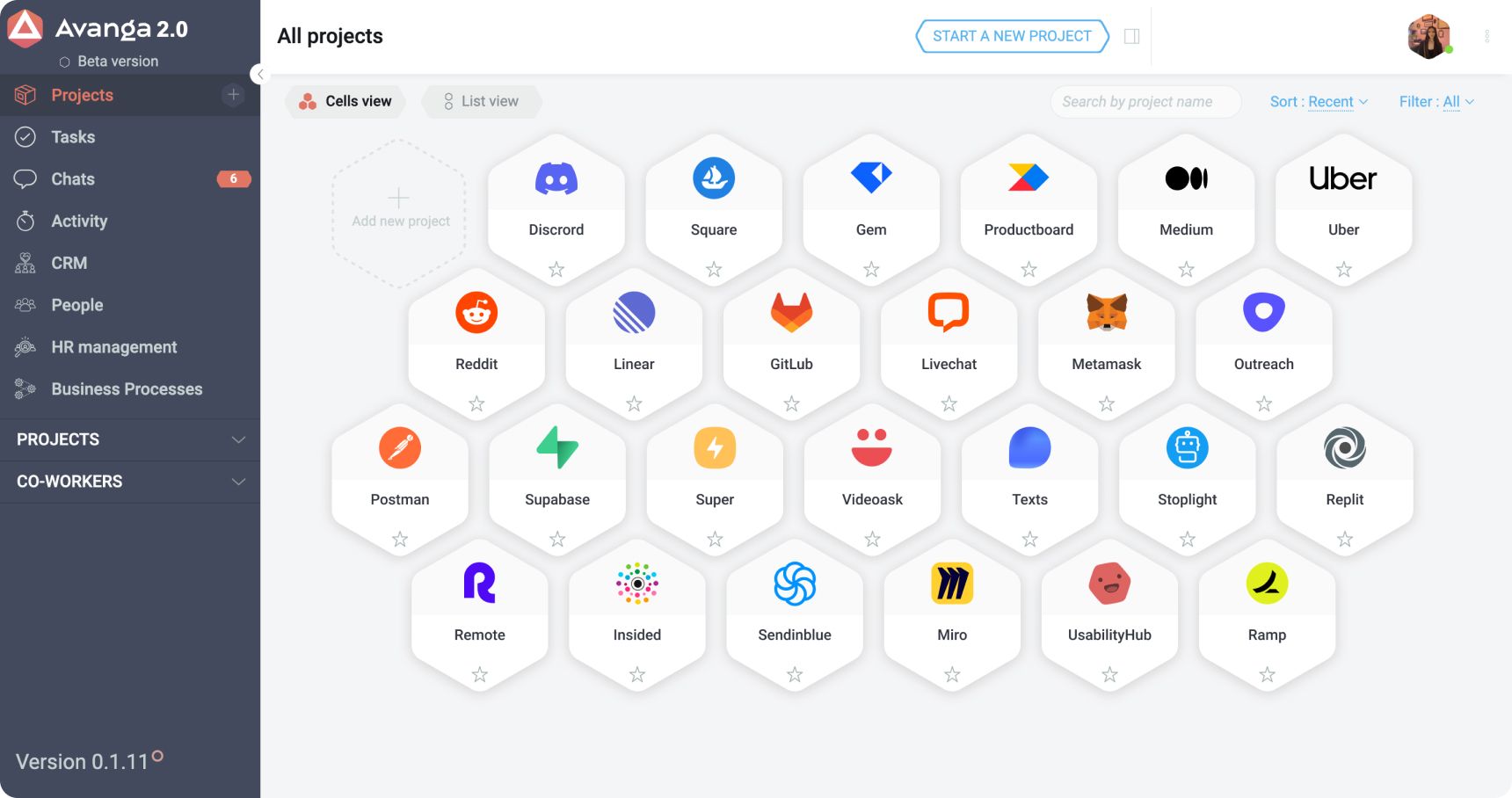
Tasks
This module is a detailed scheme of the employees’ workflow that allows monitoring each stage of a project in detail. This multitasking module contains such functions as time and progress tracking along with reports generation on each stage. Such functionality contributes to better employee performance and overall workload optimization.
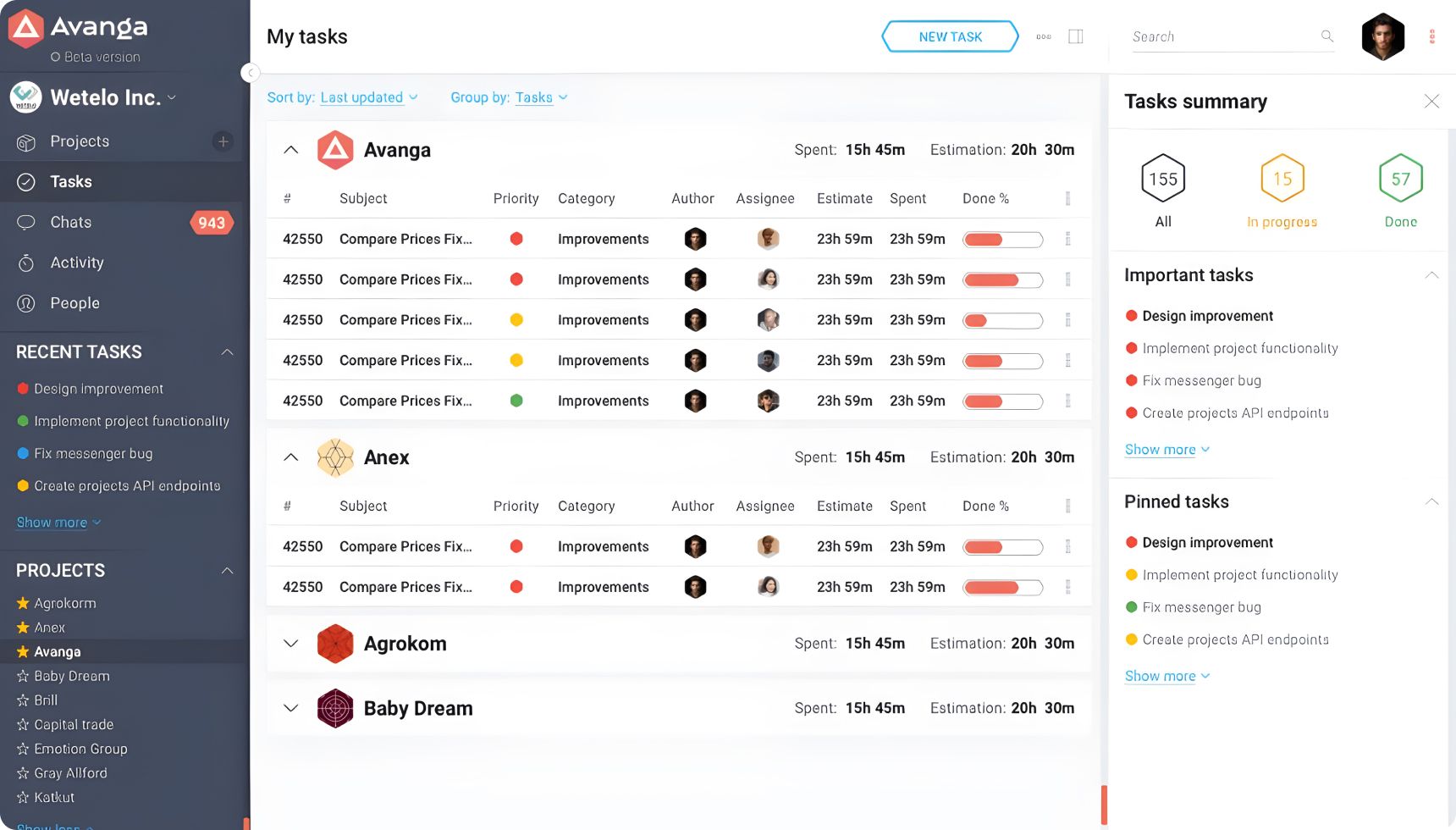
Messenger
This module is a detailed scheme of the employees’ workflow that allows monitoring each stage of a project in detail. This multitasking module contains such functions as time and progress tracking along with reports generation on each stage. Such functionality contributes to better employee performance and overall workload optimization.
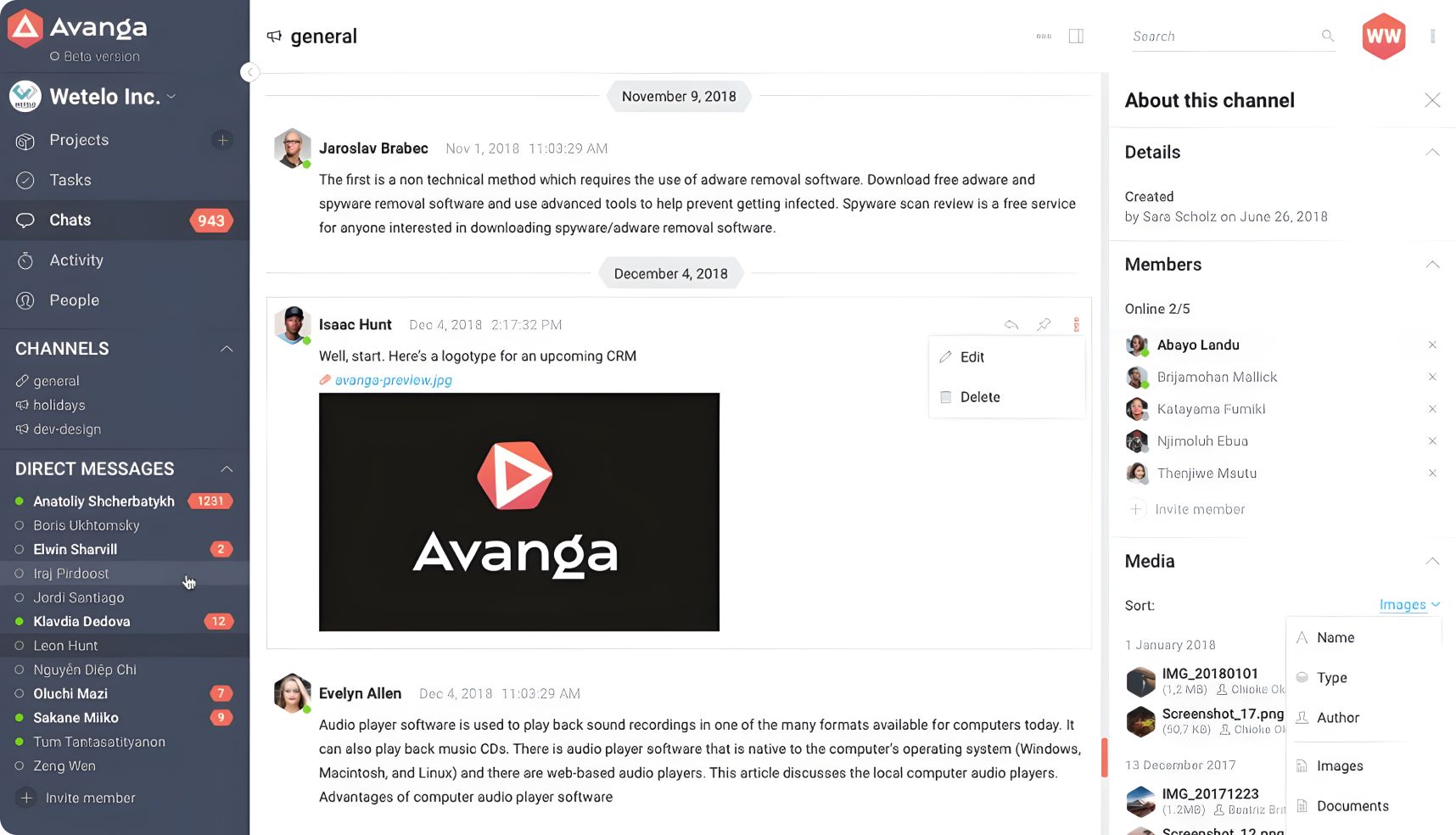
Activity
This module monitors time spent on projects, helps to track employee engagement and see how much time a project takes. Additionally, the module allows employees to monitor their workflows at all levels including tasks, statistics, and projects, helping them master their time management skills.
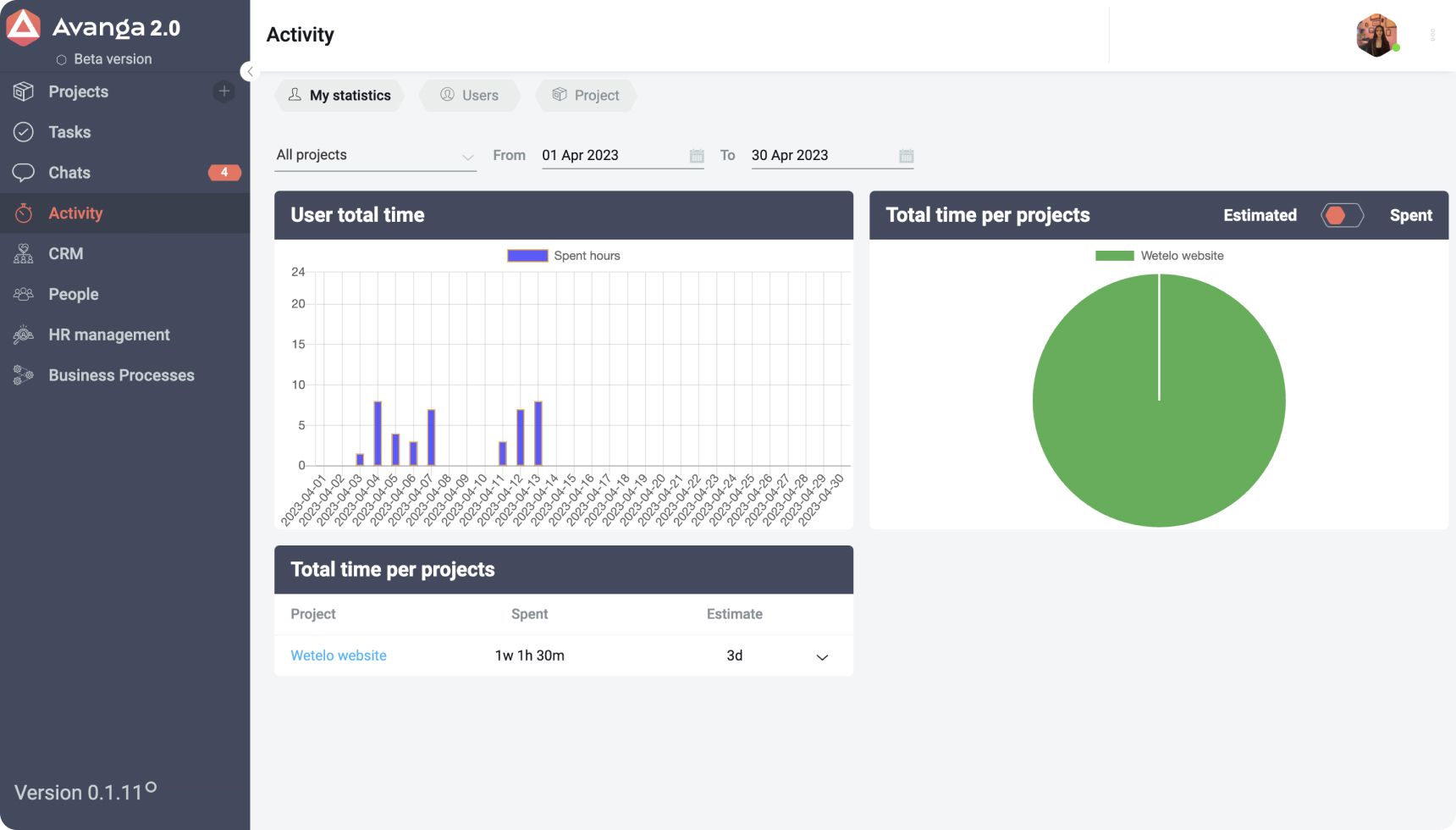
Time tracking
With time tracking, we can compare the results and create detailed business statistics. We can also track the task statuses or analyze our team productivity indicators, which ensures better day-to-day time management.
Leads
Leads module contains a database with data about our potential clients. With its help, our sales team can find information about prospects interested in specific services and also see all the closed and lost deals. This option is helpful for building a solid database of leads, reaching more potential audiences, and ensuring the sustainability of the business.
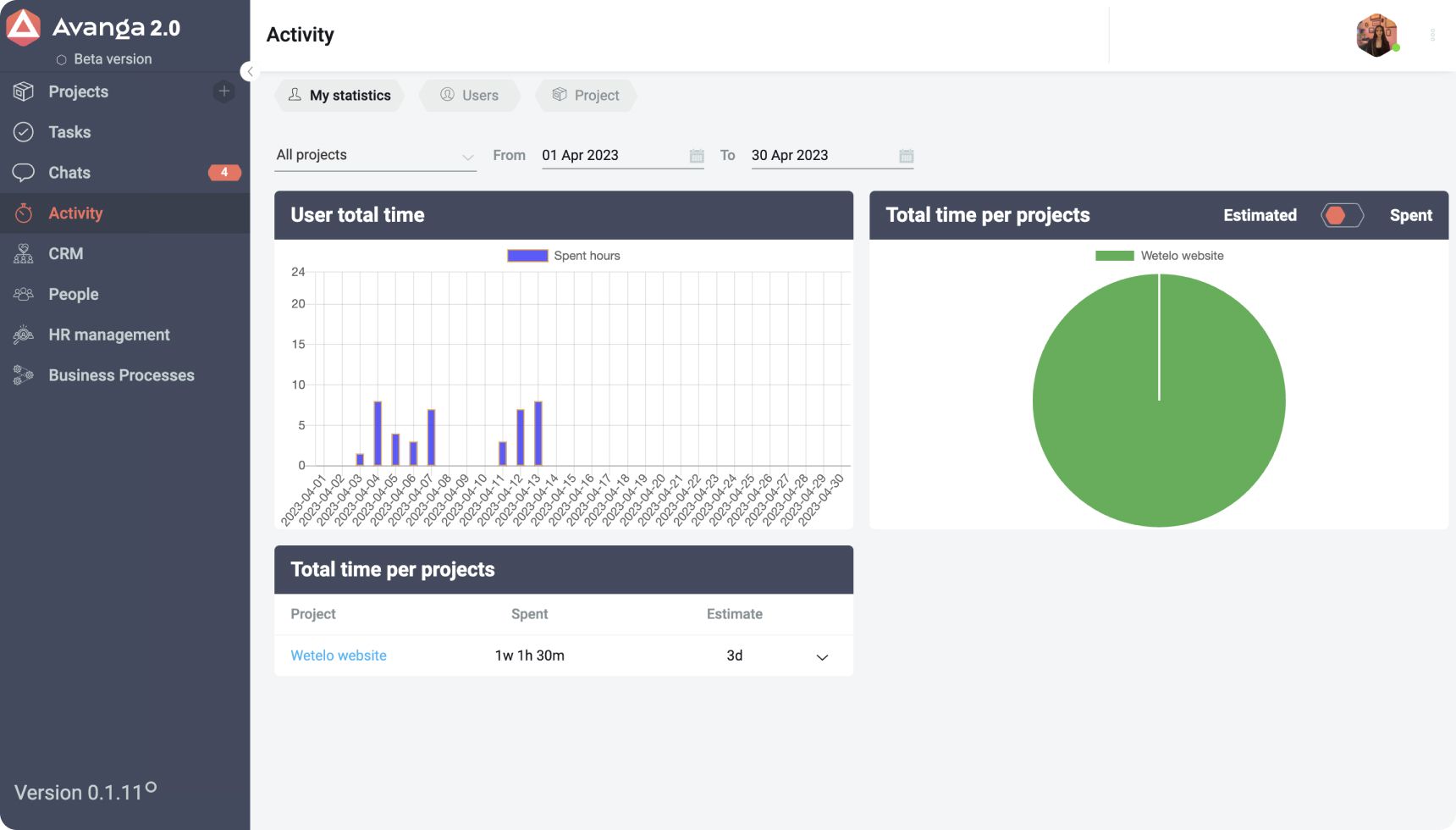
CRM
All the information related to company clients, their contact information and details related to their projects is stored in this module.
05
Avanga 2.0: better functionality, more opportunities
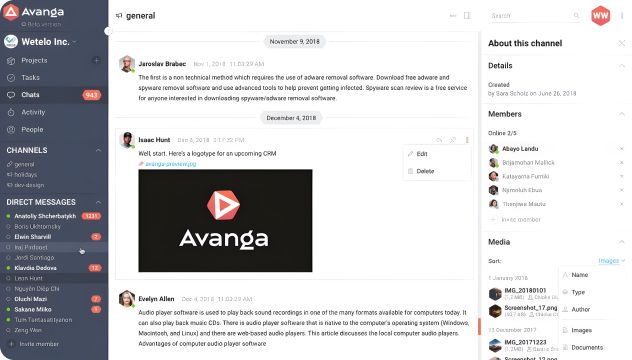

Our next step was to test our MVP to understand whether this tool could bring value to our employees. We collected our employees’ feedback and detected some functional shortcomings that caused the need for product improvement and the implementation of additional modules:
Apart from that, we decided to change the technology to improve our MVP. For the second version of Avanga, our developers used React because it is easier to maintain and flexible due to its modular structure, which simplified the process of making changes.
Avanga 2.0 also has a Chrome extension that allows project managers to monitor their team’s actions in real-time, schedule chat sessions, and customize and rearrange tasks faster. Additionally, Avanga 2.0 includes Stripe integration, which collects and processes payments automatically. One more peculiar feature of Avanga 2.0 is that it is powered by AI technology to optimize business processes within the company. We are planning to work on the product’s AI further so that it will help our employees optimize their workflow by automating routine tasks, improve sales forecasting accuracy based on the previous data, offer buyers more fitting services based on their behaviors, and more.
Invoice
The module automates the payment process and provides the income/spending report overview. Thanks to the automated process, our accountants don't have to spend much time and effort verifying electronic documents. Additionally, this module prevents the loss of payment documents, as all of them are archived and can be easily found.
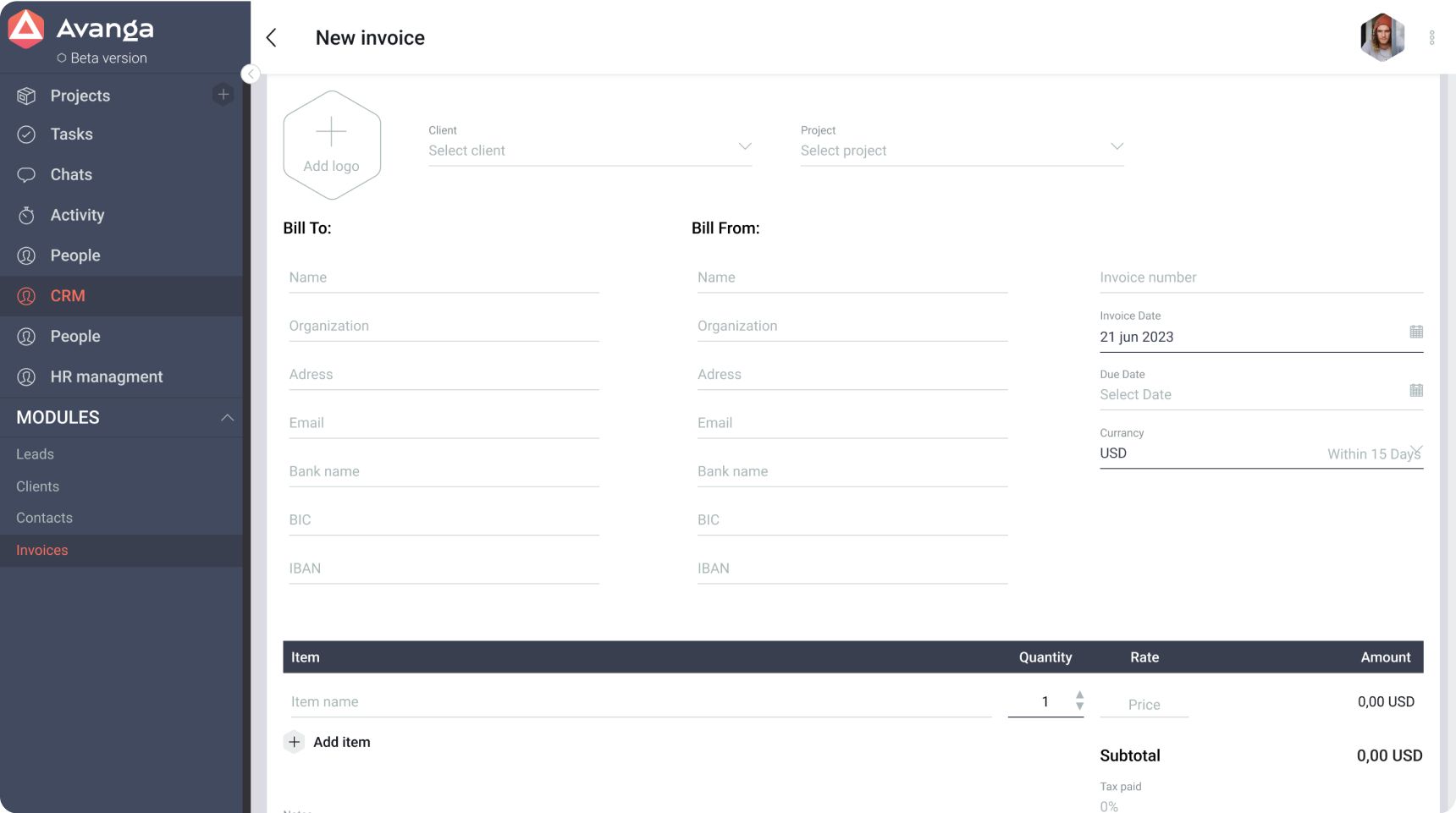
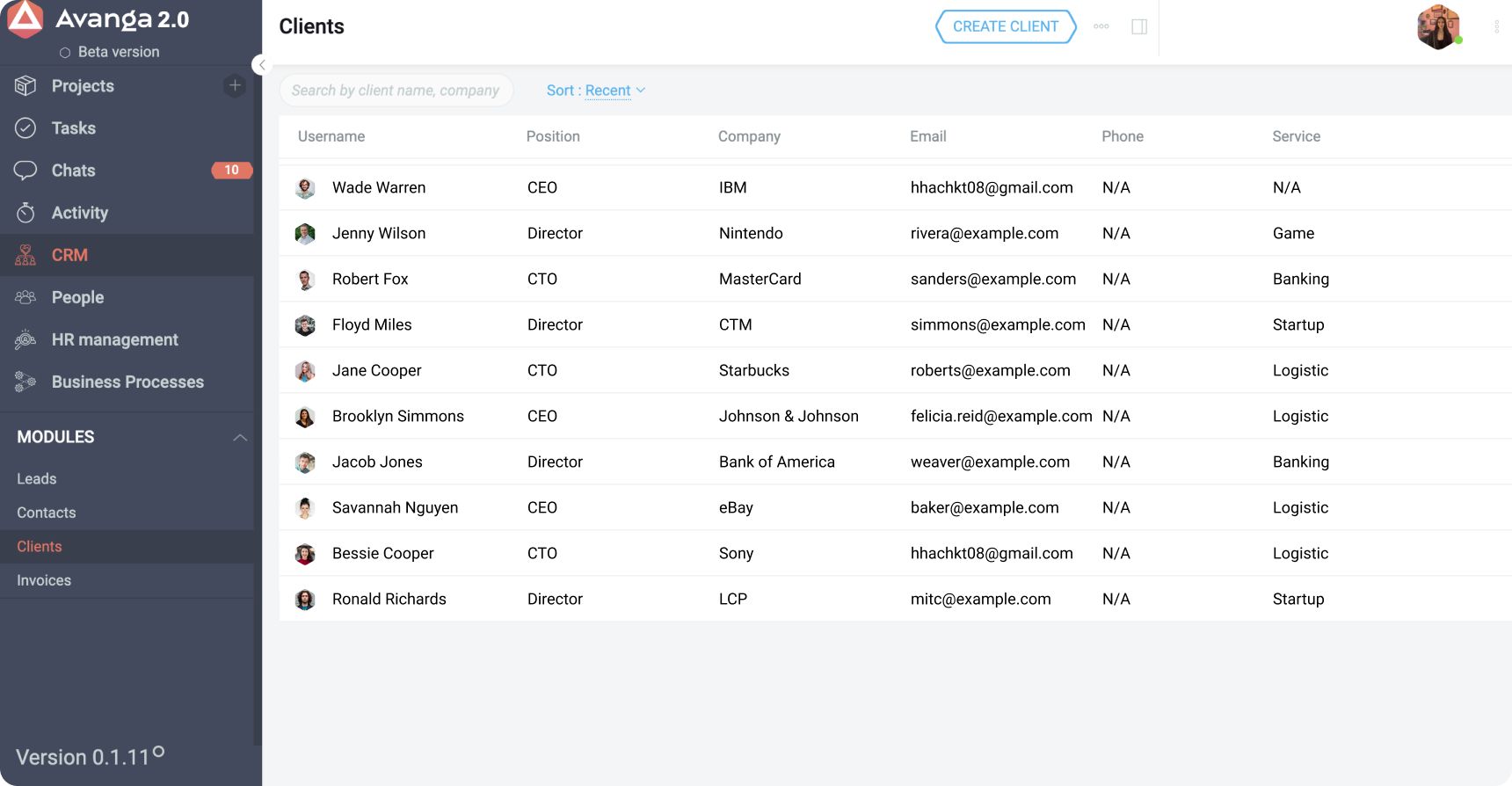
Clients
This module stores important data about customers in one place and is responsible for showing the current status of each client. This option allows employees to improve their efficiency in terms of building long-lasting relations with the company's clients and better addressing their needs.
06
Results: improved team productivity and employee satisfaction
With Avanga, our company has improved project management, received a higher rate of completed tasks, and achieved process optimization and automation.
We continue improving Avanga further.
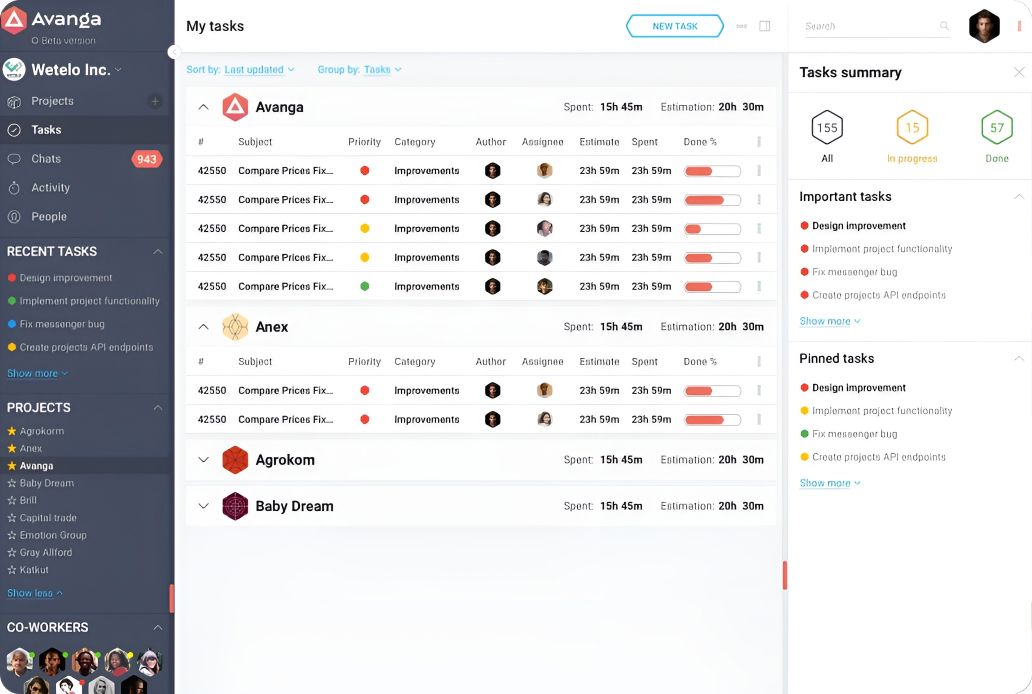
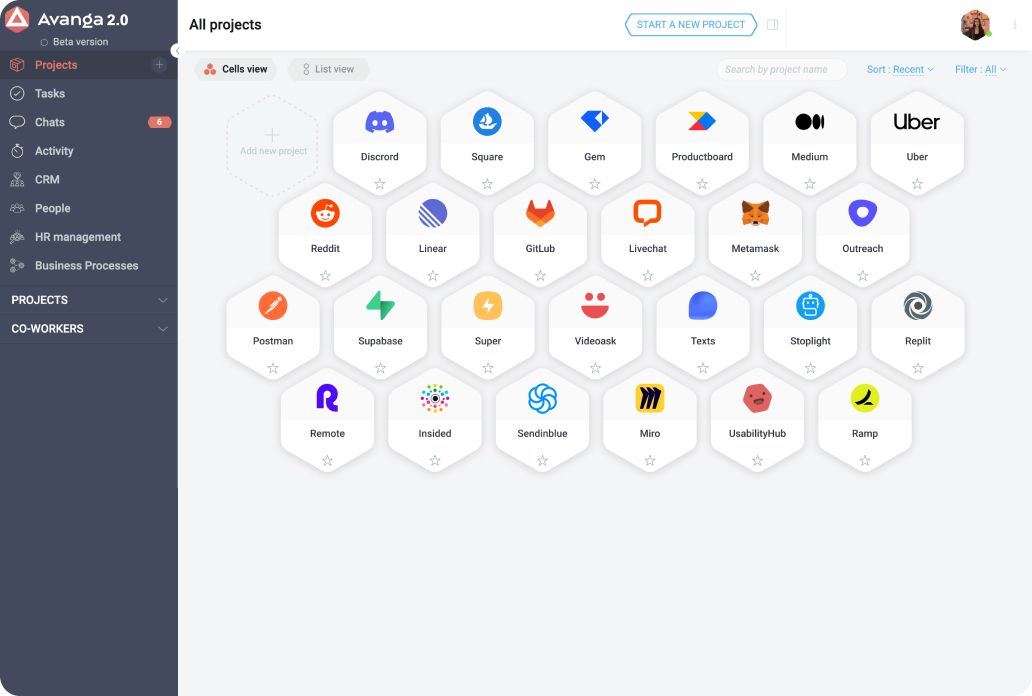
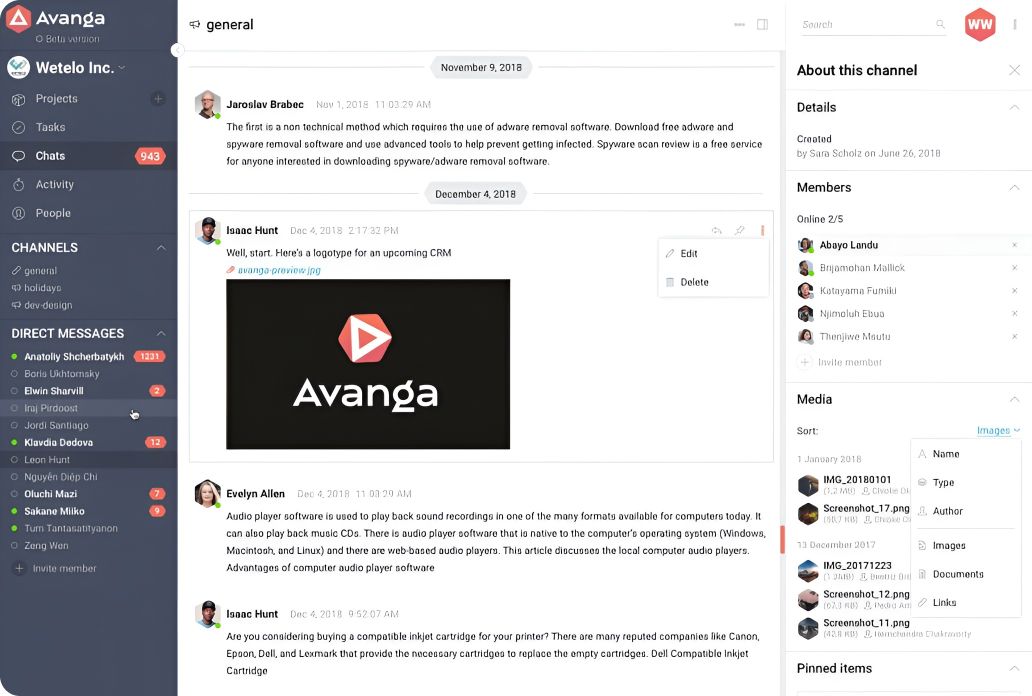
We are keeping abreast with the times by involving AI to automate business processes. Such an approach can be also useful for other companies that want to improve performance and efficiency.

